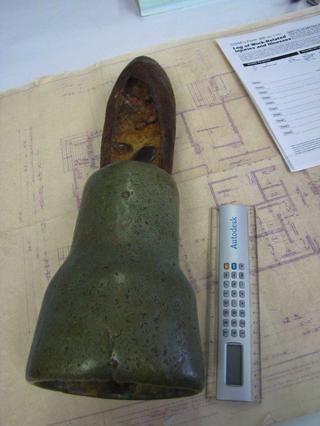World War II Ordnance Lands At Ounalashka Corp.

Tuesday, April 16 2013
Walk down Unalaska’s beaches enough times, and you’re likely to find a scrap of World War II memorabilia. Most of it is harmless -- spent shells, or rusty steel. But some of it is unexploded ordnance, which can grow unstable as the years go by.
This month, the Ounalashka Corporation ended up their own potentially dangerous piece of WWII history. The ordnance was actually a donation from a well-meaning UniSea employee. Corporation staff didn’t know what to do with it, so they handed it off to Dave Gregory. He’s the operations manager.
"I’ve never seen anything like it. It’s almost like the projectile is set into this big brass socket, and that’s probably six inches in diameter," Gregory says. "So it’s a pretty weighty thing."
Gregory says the original owner had picked it up on a beach last summer. His roommate kept it after the man moved away, and decided he should turn it in.
The corporation does accept donations of spent shells for their display at the airport visitors’ center. But Gregory they don’t take anything that might still have a charge inside – and this round definitely qualifies.
"I guess he figured he found it on OC land and he wanted to return it, I guess," says Gregory. "But I want to let folks know that we’re not the repository for those types of things! They need to get ahold of public safety, and they can deal with them."
In a manner of speaking, that’s true. Public Safety will retrieve unexploded ordnance for safe-keeping. But director Jamie Sunderland says the safest thing to do is destroy it – and that’s not up to local authorities.
"It is the responsibility of the military to come and dispose of old ordnance," Sunderland says. "They’ve done it on the island over the years a few times. So they’ll be back out soon here to dispose of this."
The Explosive Ordinance Disposal team, stationed at Joint Base Elmendorf-Richardson in Anchorage, is the responsible party. They’re planning to fly in to Unalaska Wednesday morning and destroy the round.
Until then, the projectile is stored in a bunker. Public Safety declined to say where, exactly, to discourage people from looking for it.



